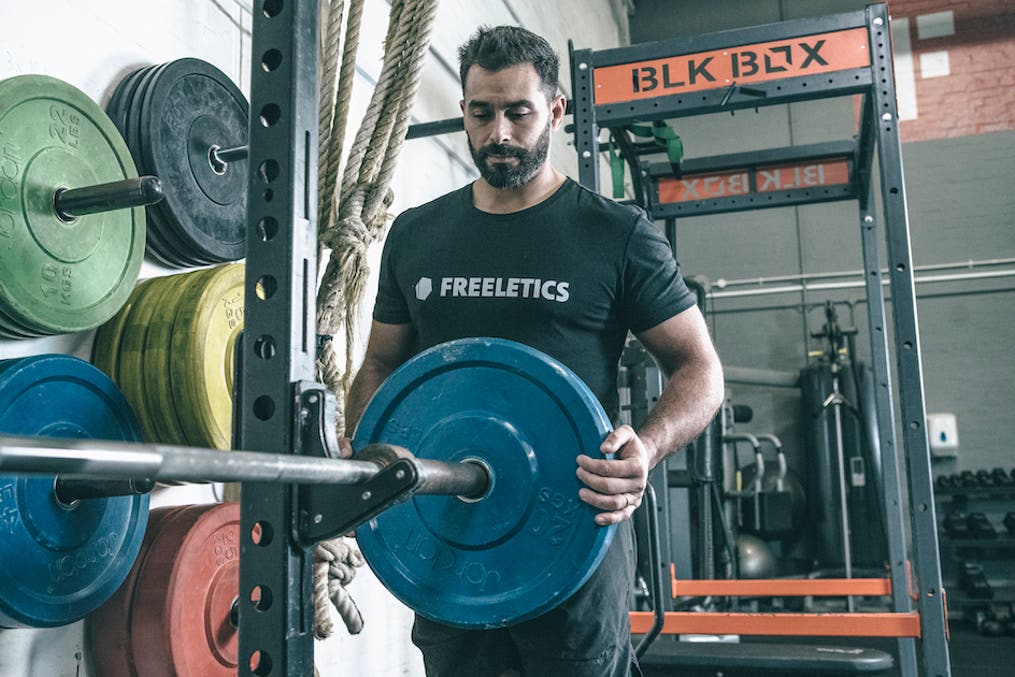Before you can even start your weight training, you need to load the barbell. Simple as this may sound, loading the bar can be a task laden with difficulty and, if done incorrectly, can even lead to injury. To help prevent you crashing out before your training has even begun, training specialist John-Francis Kennedy has a guide to loading a barbell for three key compound exercises.
Deadlifts: worth the hassle?
Loading the bar for deadlifts is exhausting, but you can quickly learn how to do it the most efficient way possible. After a warm up, you would typically start with a largest weight plate to set the barbell up. You can do this very easily in a squat rack.
On the floor, it’s a bit more difficult. You first need to lift one end of the bar up and slide the plate on. This brings the bar to the optimal height - around mid-shin - and makes the following loading process easier. Now that the bar is elevated, you can slide the lighter weight plates on without lifting one end up each time. For example, if you were to deadlift 95kg, you would put on the 20kg plate on each side first, before adding the 10kg plate. Then you should add the 5kg plate, followed by the 2,5 weight increment. This is, of course, after you performed your warm up sets.
Unloading the barbell after heavy deadlifts is equally annoying. To simplify this process, you can go about it two ways. Either you can choose to place the barbell onto the pins in a squat or power rack; if the pins are around hip height, you can easily unload and return the weight plates. On the floor however, it is best to unload one side first. Now, with the weight plates only on one side, you can lift the other end of the barbell up and bring it vertical to the ground. Then you can just slide all of the plates down at once, lift the barbell up and put the equipment back.
Very rarely a gym will have something called a bar jack. A bar jack helps you load a plate that is on the ground. It’s basically a hook that elevates the bar, allowing you to easily load and unload without lifting the bar up yourself.
The principle of starting with the heaviest plate closest to the center of the bar applies to all barbell exercises. This ensures that the load is closest to your body’s center of gravity - optimizing your force production.

Beast your bench press
After loading the barbell with weights, you should use weight clips to make sure that the weights don’t slide off. This is especially crucial during bench pressing.
The reason for this is that you more than likely have one arm stronger than the other. Naturally, one arm will be able to press more weight than the other. This can create an imbalance and lead to one side of the bar rising faster than the other. This may result in the weights moving or even sliding off the bar.
Weight clips prevent this from happening and are essential to safety in the gym. Always make sure to follow the second barbell loading principle of securing the weight with weight clips.

Watch your squats
Whenever you load a barbell suspended in the air, you need to be mindful of how much weight you put on one side. This is crucial when you go for weight jumps.
If you put too much weight on one side of the bar, then the bar is in risk of tipping over, especially if you haven’t put any weight on the other side yet.
Say you are doing heavy back squats with a maximum weight of 100kg: you might be tempted to put two 20kg plates on one side before moving to the other. However, start building the habit of loading both sides with at least one 20kg plate before placing the second one on the bar. Accidents involving the barbell tipping over due to a weight imbalance should be avoided at all costs to ensure the safety of yourself and other gym users.
To recap
These are the key 3 principles for safely and correctly loading a barbell. Remember to put the heaviest plates closest to the center, secure the plates with weight clips and load/unload evenly to avoid the barbell from tipping over. Follow these and you will look like a pro in every commercial gym.